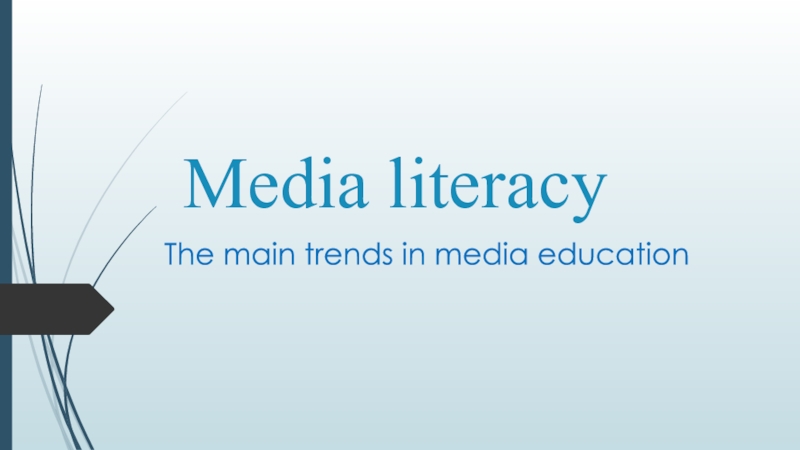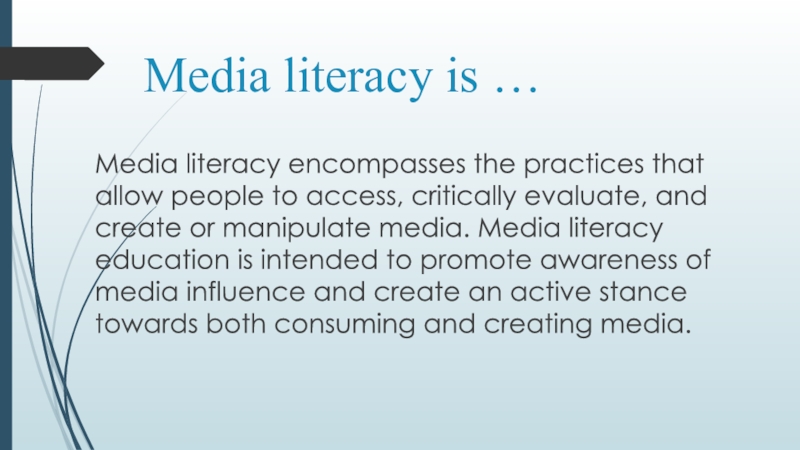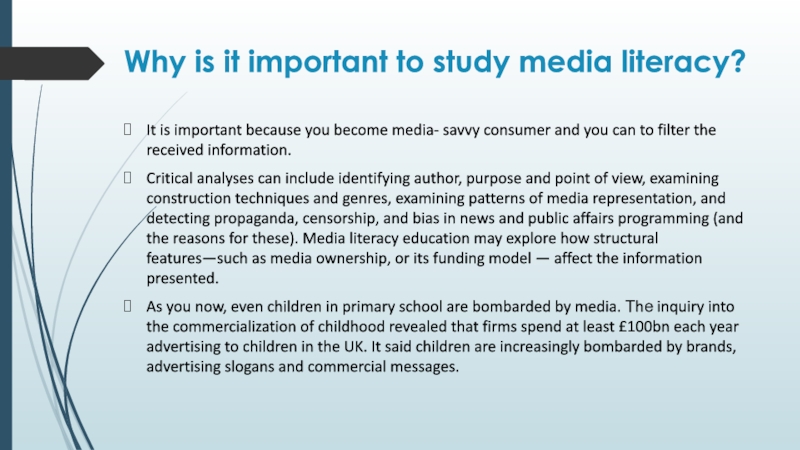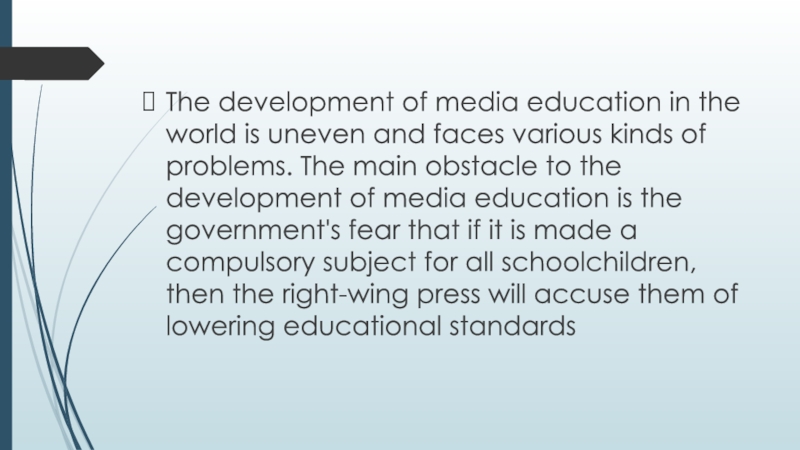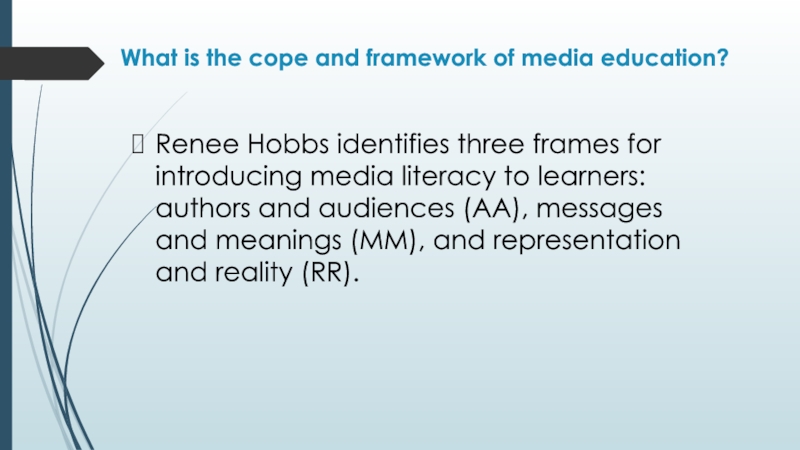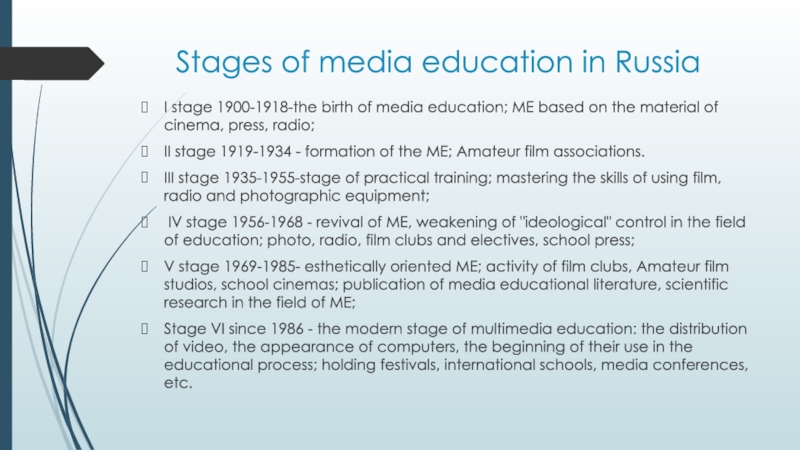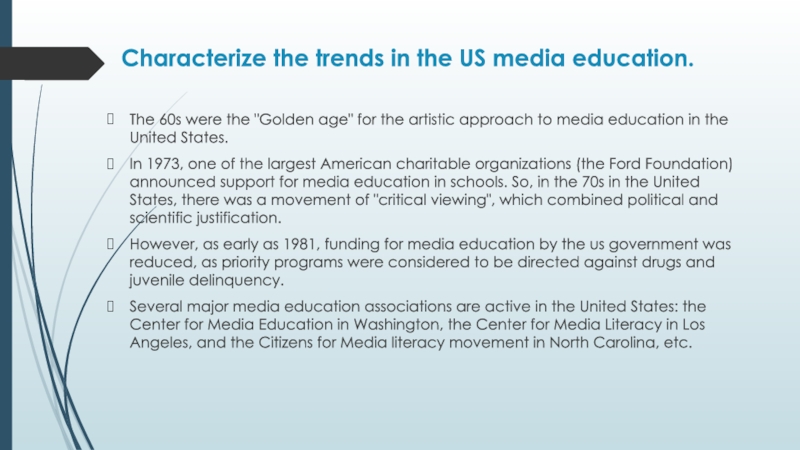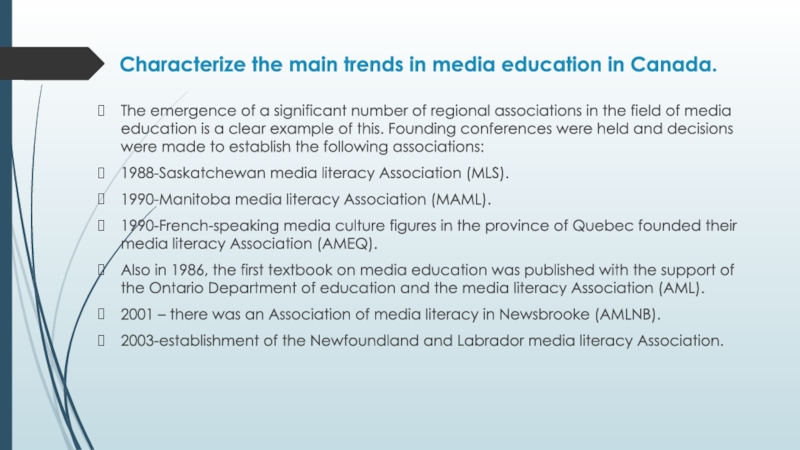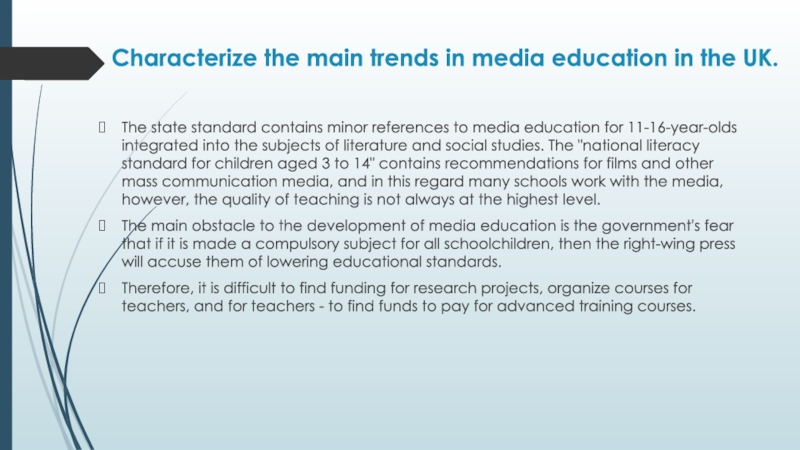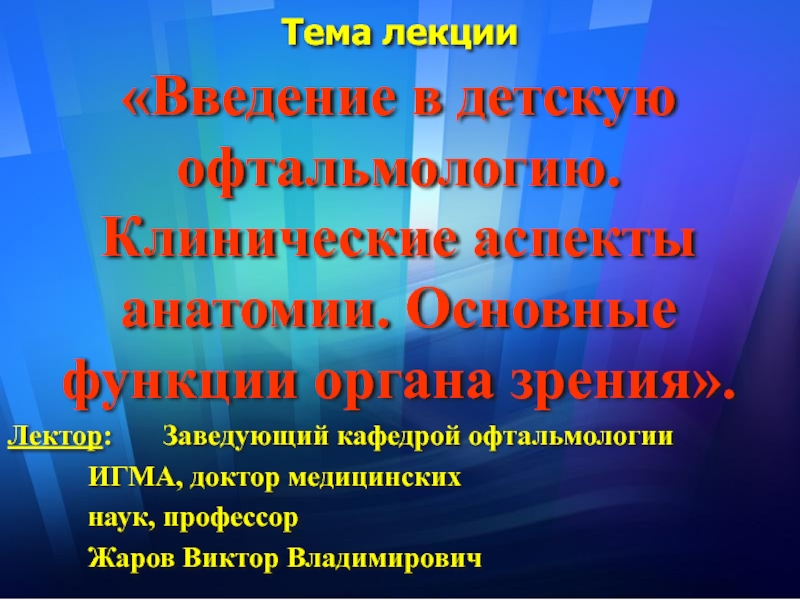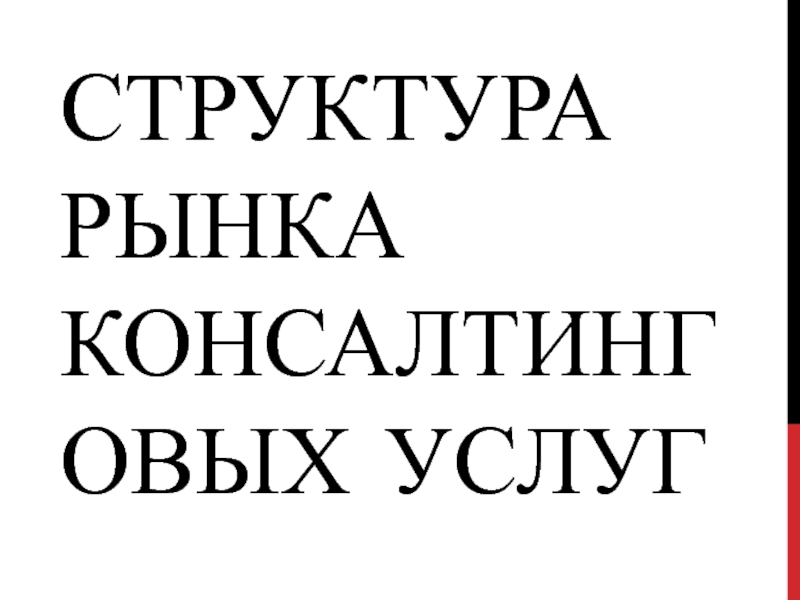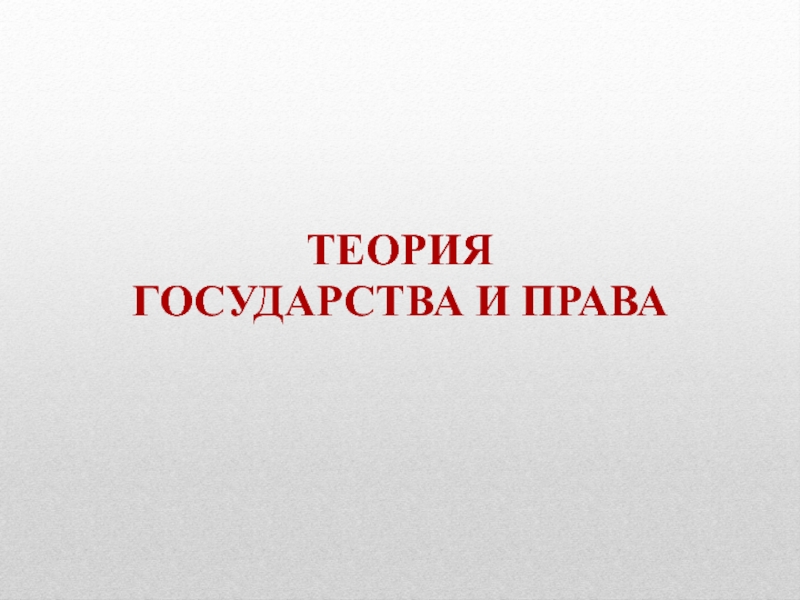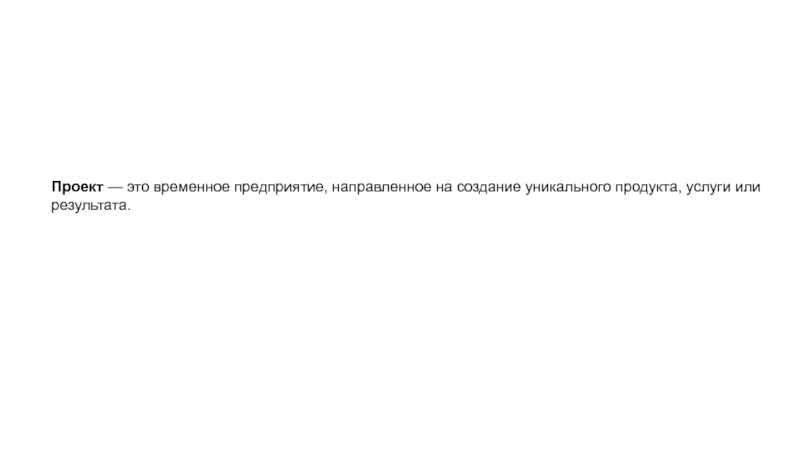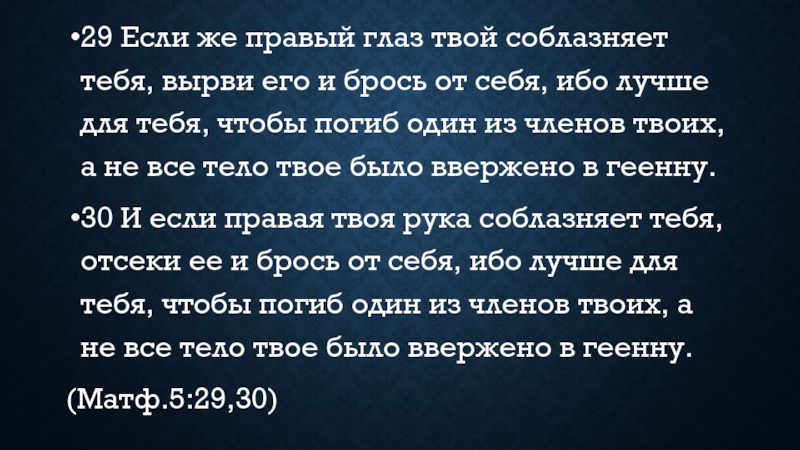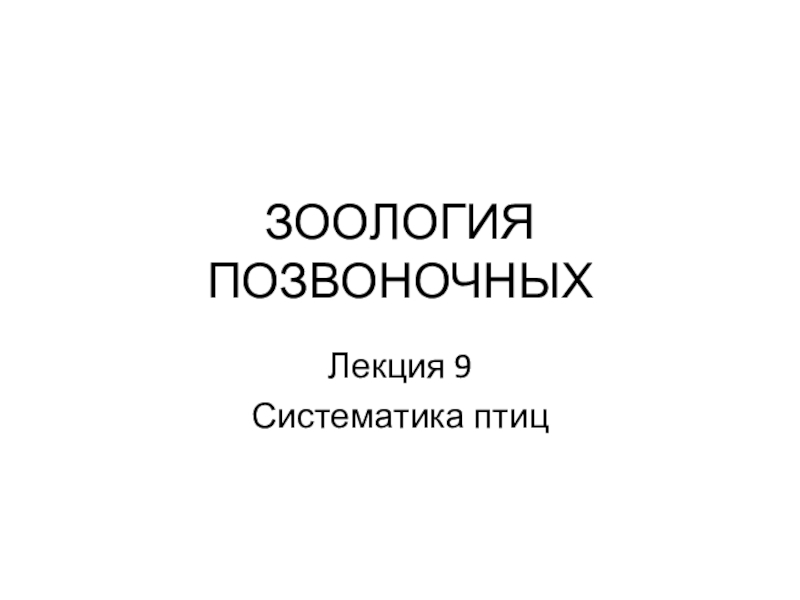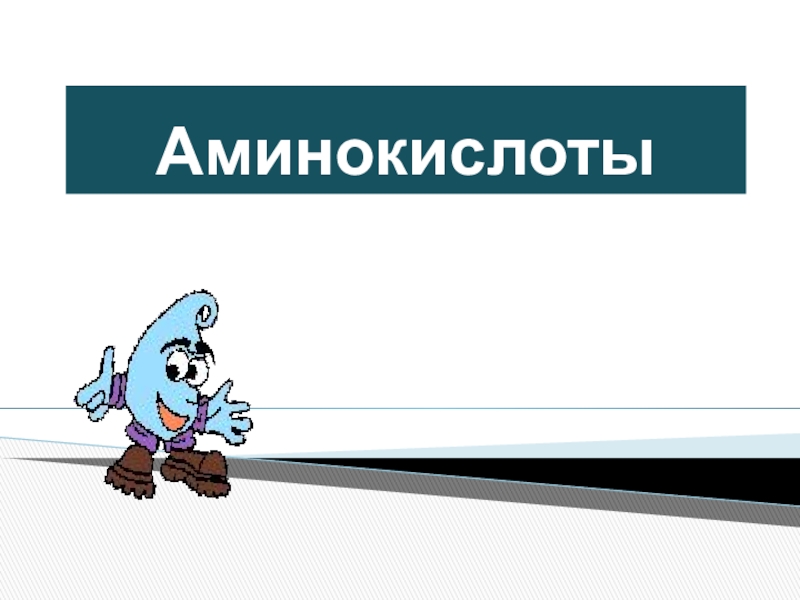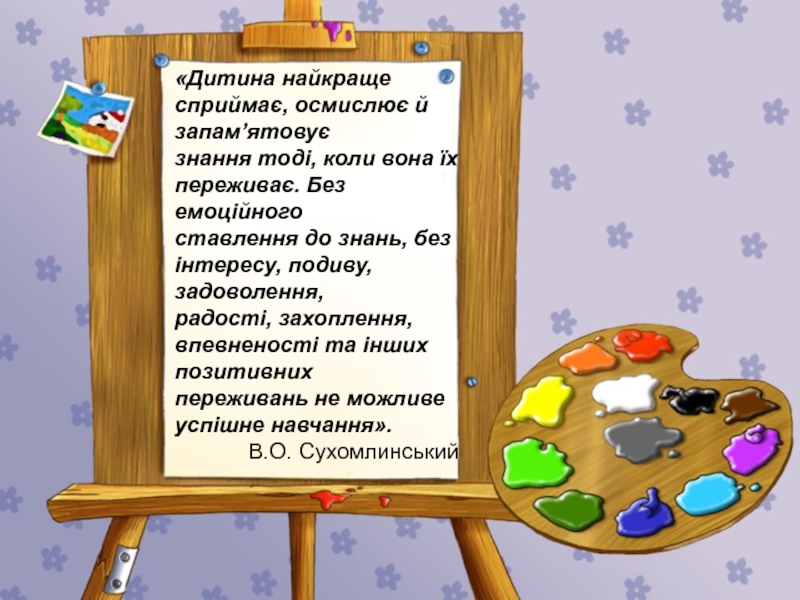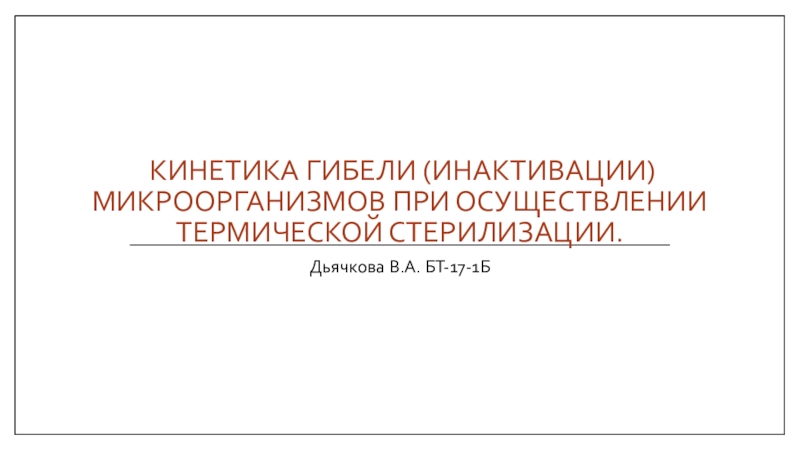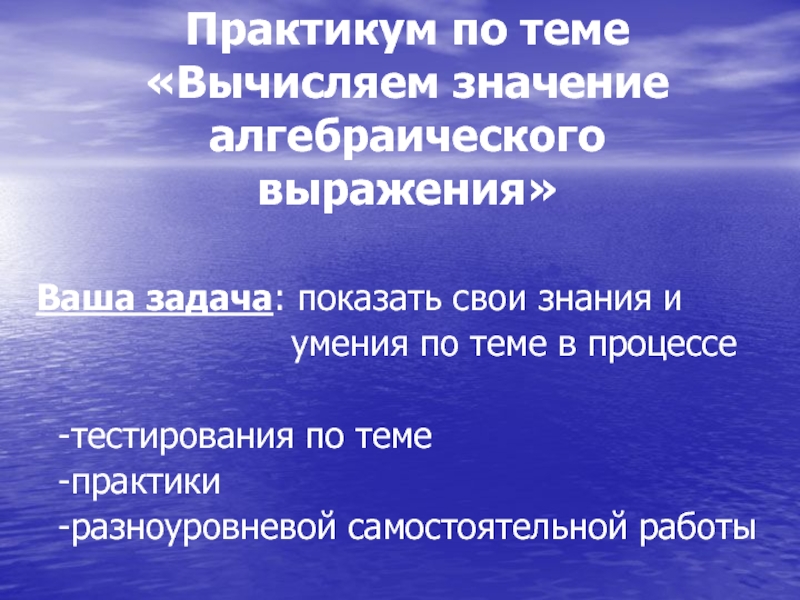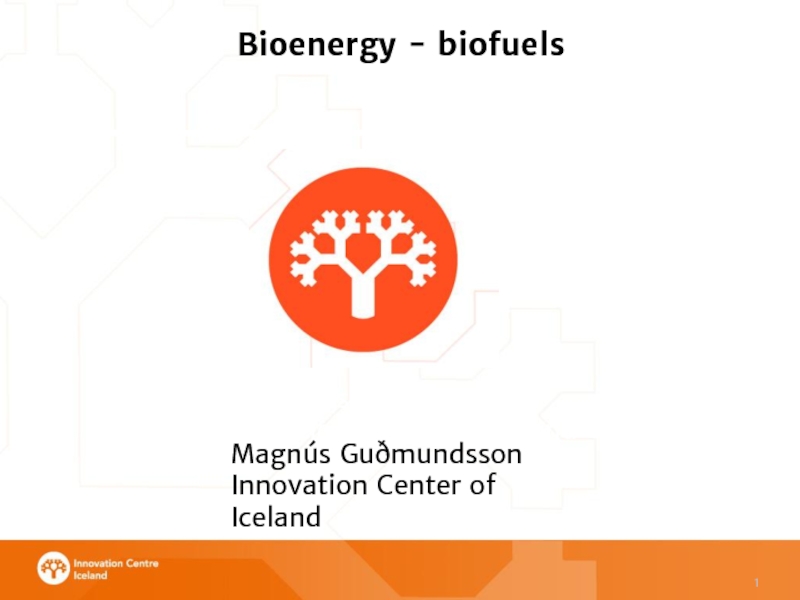Разделы презентаций
- Разное
- Английский язык
- Астрономия
- Алгебра
- Биология
- География
- Геометрия
- Детские презентации
- Информатика
- История
- Литература
- Математика
- Медицина
- Менеджмент
- Музыка
- МХК
- Немецкий язык
- ОБЖ
- Обществознание
- Окружающий мир
- Педагогика
- Русский язык
- Технология
- Физика
- Философия
- Химия
- Шаблоны, картинки для презентаций
- Экология
- Экономика
- Юриспруденция
Media literacy
Содержание
- 1. Media literacy
- 2. Media literacy is …Media literacy encompasses the
- 3. Why is it important to study media
- 4. The development of media education in the
- 5. What is the cope and framework of
- 6. Stages of media education in RussiaI stage
- 7. Characterize the trends in the US
- 8. Characterize the main trends in media education
- 9. Characterize the main trends in media education
- 10. Thank you for your attention!
- 11. Скачать презентанцию
Media literacy is …Media literacy encompasses the practices that allow people to access, critically evaluate, and create or manipulate media. Media literacy education is intended to promote awareness of media influence
Слайды и текст этой презентации
Слайд 3Why is it important to study media literacy?
It is
important because you become media- savvy consumer and you can
to filter the received information.Critical analyses can include identifying author, purpose and point of view, examining construction techniques and genres, examining patterns of media representation, and detecting propaganda, censorship, and bias in news and public affairs programming (and the reasons for these). Media literacy education may explore how structural features—such as media ownership, or its funding model — affect the information presented.
As you now, even children in primary school are bombarded by media. Тhе inquiry into the commercialization of childhood revealed that firms spend at least £100bn each year advertising to children in the UK. It said children are increasingly bombarded by brands, advertising slogans and commercial messages.
Слайд 4The development of media education in the world is uneven
and faces various kinds of problems. The main obstacle to
the development of media education is the government's fear that if it is made a compulsory subject for all schoolchildren, then the right-wing press will accuse them of lowering educational standardsСлайд 5What is the cope and framework of media education?
Renee Hobbs identifies
three frames for introducing media literacy to learners: authors and
audiences (AA), messages and meanings (MM), and representation and reality (RR).Слайд 6Stages of media education in Russia
I stage 1900-1918-the birth of
media education; ME based on the material of cinema, press,
radio;II stage 1919-1934 - formation of the ME; Amateur film associations.
III stage 1935-1955-stage of practical training; mastering the skills of using film, radio and photographic equipment;
IV stage 1956-1968 - revival of ME, weakening of "ideological" control in the field of education; photo, radio, film clubs and electives, school press;
V stage 1969-1985- esthetically oriented ME; activity of film clubs, Amateur film studios, school cinemas; publication of media educational literature, scientific research in the field of ME;
Stage VI since 1986 - the modern stage of multimedia education: the distribution of video, the appearance of computers, the beginning of their use in the educational process; holding festivals, international schools, media conferences, etc.
Слайд 7
Characterize the trends in the US media education.
The 60s were
the "Golden age" for the artistic approach to media education
in the United States.In 1973, one of the largest American charitable organizations (the Ford Foundation) announced support for media education in schools. So, in the 70s in the United States, there was a movement of "critical viewing", which combined political and scientific justification.
However, as early as 1981, funding for media education by the us government was reduced, as priority programs were considered to be directed against drugs and juvenile delinquency.
Several major media education associations are active in the United States: the Center for Media Education in Washington, the Center for Media Literacy in Los Angeles, and the Citizens for Media literacy movement in North Carolina, etc.
Слайд 8Characterize the main trends in media education in Canada.
The
emergence of a significant number of regional associations in the
field of media education is a clear example of this. Founding conferences were held and decisions were made to establish the following associations:1988-Saskatchewan media literacy Association (MLS).
1990-Manitoba media literacy Association (MAML).
1990-French-speaking media culture figures in the province of Quebec founded their media literacy Association (AMEQ).
Also in 1986, the first textbook on media education was published with the support of the Ontario Department of education and the media literacy Association (AML).
2001 – there was an Association of media literacy in Newsbrooke (AMLNB).
2003-establishment of the Newfoundland and Labrador media literacy Association.
Слайд 9Characterize the main trends in media education in the UK.
The
state standard contains minor references to media education for 11-16-year-olds
integrated into the subjects of literature and social studies. The "national literacy standard for children aged 3 to 14" contains recommendations for films and other mass communication media, and in this regard many schools work with the media, however, the quality of teaching is not always at the highest level.The main obstacle to the development of media education is the government's fear that if it is made a compulsory subject for all schoolchildren, then the right-wing press will accuse them of lowering educational standards.
Therefore, it is difficult to find funding for research projects, organize courses for teachers, and for teachers - to find funds to pay for advanced training courses.
